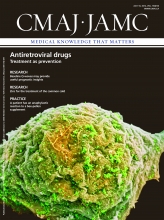The findings were nothing short of brutal. Of 46 countries in sub-Saharan Africa whose pharmacovigilance systems were assessed to determine whether they were even nominally capable of ensuring drug safety, 24 were deemed to be utterly incapable and just 4 had the capacity to “detect, evaluate, and prevent medicine safety issues.”
Needless to say, patients bore the brunt: as many as 6.3% of hospital admissions were a direct consequence of an adverse drug reaction, according to the study, Safety of Medicines in Sub-Saharan Africa: Assessment of Pharmacovigilance Systems and their Performance, conducted by the Arlington, Virginia–based international nonprofit organization Management Sciences for Health (www.msh.org/projects/sps/SPS-Documents/loader.cfm?csModule=security/getfile&pageid=60382). Between 6.3%–49.5% of hospitalized patients developed adverse drug reactions.
Among the litany of identified woes: shortages in basic infrastructure, personnel and equipment; substandard and counterfeit medicines; a flood of medicines onto the continent as a result of international aid programs designed to mitigate the effects of diseases such as malaria and AIDs; medication errors; pharmaceutical industry indifference to pharmacovigilance; government and health professional disinterest in safety reporting regulations; and so on.
In sum, “the regulatory infrastructure for pharmacovigilance in Africa is weak,” says study coauthor Jude Nwokike, principal technical advisor at Management Sciences for Health. Only 30% of the countries had mandated adverse event reporting of any manner and just 17% required the pharmaceutical industry to conduct postmarket surveillance.
Experts gathered at a continental pharmacovigilance summit in April in hopes of finding solutions to the problem but the options that emerged were predominantly general in nature. The recommendations for reducing “preventable adverse events,” for example, were: “Epidemiological studies to be conducted. Documentation of cases using existing data. Strengthen monitoring mechanisms, adopt a systems approach to recognize the problem, identify gaps and develop appropriate intervention to address the gaps — capacity building through training programs aimed at addressing knowledge gaps [and] use of existing guidelines (e.g. WHO [World Health Organization]).”

As many as 6.3% of hospital admissions in sub-Saharan Africa are a direct consequence of an adverse drug reaction, while between 6.3%–49.5% of hospitalized patients developed adverse drug reactions, according to the Arlington, Virginia–based international nonprofit organization Management Sciences for Health.
Image courtesy of ©2012 Thinkstock
Recommendations for systemic change included ones to harmonize regulatory activities on the continent, integrate pharmacovigilance activities into public health programs and use the report as an advocacy tool for increased funding, says Dr. Alex Dodoo, director of the WHO Collaborating Centre for Advocacy and Training in Pharmacovigilance in Accra, Ghana.
It will also be necessary to diminish fear of reprisal among health professionals if they report an adverse drug reaction, says Helen Byomire Ndagije, head of the National Pharmacovigilance Centre in Uganda, one of the four countries, along with South Africa, Namibia and Nigeria, which were rated as having the requisite structures in place to evaluate drug risks. “So we tell them that we are not pointing fingers at people; we are watching the system to improve it.”
Among other measures aimed at improving adverse drug effect reporting is a mobile phone pharmacovigilance alert system for consumers that was implemented in June in Nigeria, says Adeline Osakwe, head of the country’s National Pharmacovigilance Centre.
Nwokike says the gathering also saw the United States Agency for Development and US Food and Drug Administration agree to support the development of pharmacovigilance tools for Africa but he refused to articulate what those might be as they are to be included in a publication he and colleagues are crafting.
According to a report on the proceedings, regulatory authorities in African nations “require the necessary infrastructure and resources including laws, systems and structures, human resources (in terms of numbers, knowledge and skills) and financial resources to execute their mandate” (http://africapv2012.files.wordpress.com/2012/05/e-drug-panel-access-patient-safety-final1.pdf).
Many of the requisite tools for pharmacovigilance need not be re-invented, the report added. Those include policy and regulation; an “indicator based pharmacovigilance assessment tool” that helps identify unsafe or poorly made medicines, adverse reactions and medication errors, as well as data management and risk evaluation systems.
Among other recommendations were the strengthening of training for regulatory and public health workers, including physicians; mandatory industry reporting “on adverse drug reactions and serious drug events;” as well as consider “introducing fees for pharmacovigilance services and advocate for phamacovigilance activities as part of standard health care delivery system.”
Others suggest the solution lies in continental coordination.
The South Africa–based New Partnership for Africa’s Development is now working to harmonize drug registration, and is investing in information technologies, so that countries within a region of Africa, such as West or East Africa, can jointly evaluate and approve medicines, says Margareth Ndomondo-Sigonda, pharmaceutical coordinator for the agency.
It will also be valuable if public health and drug regulation officials in various countries share information about medication errors and adverse drug reactions, says Ndomondo-Sigonda. “Let us break the silos of the regulatory bodies and public health programs working on their own.”








